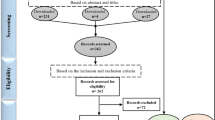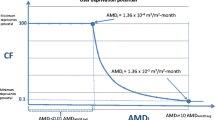Abstract
The research presents an innovative and practical technical performance evaluation method to analyze surface water distribution adequacy, equity, efficiency, and dependability across various water scarcity scenarios within an irrigation district (ID). The method uses an integral-delay simulation model to simulate hydraulic flow in main, secondary, and tertiary irrigation canals. The temporal analysis employs three indices: Adequacy, Dependability, and Efficiency, while the Equity of water distribution index is used for spatial analysis of the simulated agricultural water distribution among farmers' cooperatives. The method also uses two commonly used multicriteria decision-making methods, the Analytic Hierarchy Process (AHP) and Shannon Entropy (SE), to develop a Holistic Appraisal Index (HAI) to assess the overall performance of the operational system. The study applies the developed method to the NekooAbad ID in Isfahan, comprising thirteen United Farmers' Cooperative Companies and 149 farmers' cooperatives through secondary and tertiary canals, serving as a case study. The hydraulic flow simulation model has been calibrated and verified based on three operational periods from 2000–2001, 2010–2011, and 2021–2022. Temporal analysis reveals that adequacy decreases and dependability increases downstream in the main and lateral canals. The daily average variability range of the adequacy and dependability indices for surface water distribution ranged from 95–64%, 56–90%, 54–89%, 50–89%, 49–86%, 46–86%, and 77–33% for normal scenarios to water scarcity scenarios of > 10%, 10–15%, 15–20%, 20–30%, 30–40%, and < 40%, respectively. According to the HAI's spatiotemporal evaluation, the reliability of the MOS decreases significantly in water scarcity scenarios. Smart ID managers can use the proposed spatiotemporal performance evaluation approach to identify and prioritize vulnerable areas at risk of surface water distribution failure.





Similar content being viewed by others
Data Availability
All the data used in this study can be requested by email to the corresponding author.
Abbreviations
- MOS:
-
Manual operational system
- ID:
-
Irrigation district
- Co-Ops:
-
Farmers' cooperatives
- HFS:
-
Hydraulic flow simulation
- AHP:
-
Analytic hierarchy process
- SE:
-
Shannon entropy
- HAI:
-
Holistic appraisal index
- RMSE:
-
Root mean square error
- CRM:
-
Coefficient of residual mass
- MAE:
-
Mean absolute error
- PA :
-
Adequacy of surface water distribution
- PF :
-
Efficiency of surface water distribution
- PE :
-
Equity of surface water distribution
- PD :
-
Dependability of surface water distribution
- CMS:
-
Cubic meters per second
References
Bayat F, Roozbahani A, Hashemy Shahdany SM (2022) Performance evaluation of agricultural surface water distribution systems based on water-food-energy nexus and using AHP-Entropy-WASPAS technique. Water Resour Manage 36(12):4697–4720
Bertsiou MM, Baltas E (2022) Energy, economic and environmental analysis of a hybrid power plant for electrification, and drinking and irrigation water supply. Environ Process 9(2):22
Burt CM (2013) The irrigation sector shift from construction to modernization: what is required for success? Irrig Drain 62(3):247–254
Dejen ZA, Schultz B, Hayde L (2015) Water delivery performance at Metahara large-scale irrigation scheme, Ethiopia. Irrig Drain 64(4):479–490
Fard AA, Shahdany SM, Javadi S (2021) Automatic surface water distribution systems: a reliable alternative for energy conservation in agricultural section. Sustain Energy Technol Assess 45:101216
Fipps G (2000) Potential water savings in irrigated agriculture for the Rio Grande Planning Region (Region M). Texas Cooperative Extension, Texas A&M University System
Hashemy S, Monem M, Isapoor S, Van Overloop P (2013) Using in-line reservoir operational strategy to improve Dez main irrigation canal performance. Irrig Drain 62(4):458–467
Hashemy SM, Maestre JM, van Overloop PJ (2015) Equitable water distribution in main irrigation canals with constrained water supply. Water Resour Manage 29(9):3315–3328
Kaghazchi A, Shahdany SMH, Roozbahani A (2021) Simulation and evaluation of agricultural water distribution and delivery systems with a Hybrid Bayesian network model. Agric Water Manag 245:106578
Khaeez S, Shahdany SMH (2021) Non-structural modification of agricultural water distribution systems in large scale irrigation districts. Comput Electron Agric 184:106102
Mishra A, Anand A, Singh R, Raghuwanshi N (2001) Hydraulic modeling of Kangsabati main canal for performance assessment. J Irrig Drain Eng 127(1):27–34
Molden DJ, Gates TK (1990) Performance measures for evaluation of irrigation-water-delivery systems. J Irrig Drain Eng 116(6):804–823
Monem MJ, Shuurmans W (1992) Performance of canal delivery strategies and control systems. HMI international workshop on the application of mathematical modeling for the improvement of irrigation canal operation. Montpellier, France, pp 307–315
Noruzi M, Yazdandoost F (2019) Determining the optimal point in arid basins using water-energy Nexus approach. Int J Optim Civ Eng 9:423–435
Shahrokhnia M, Javan M (2005) Performance assessment of Doroodzan irrigation network by steady state hydraulic modeling. Irrig Drain Syst 19(2):189–206
Shahverdi K, Maestre J (2022) Gray wolf optimization for scheduling irrigation water. J Irrig Drain Eng 148(7):04022020
Shahverdi K, Maestre JM (2023) Holistic framework for canal modernization: operation optimization, and economic and environmental analyses. Water Resour Manag 37(15):6145–6164
Shahverdi K, Monem MJ, Nili M (2016) Fuzzy SARSA learning of operational instructions to schedule water distribution and delivery. Irrig Drain 65(3):276–284
Tariq JA, Latif M (2011) Flexibility analysis of irrigation outlet structures using simulation of irrigation canal hydrodynamic model. Irrig Sci 29:127–134
Tsakmakis ID, Zoidou M, Gikas GD, Sylaios GK (2018) Impact of irrigation technologies and strategies on cotton water footprint using AquaCrop and CROPWAT models. Environ Process 5:181–199
USBR (2005) Reclamation managing water in the west, appraisal report, water supply augmentation, W. C. Austin Project, Oklahoma, U. S. Department of the Interior Bureau of Reclamation
van Overloop PJ, Negenborn RR, Schutter BD, van de Giesen NC (2010) Predictive control for national water flow optimization in The Netherlands. In: Negenborn R, Lukszo Z, Hellendoorn H (eds) Intelligent Infrastructures. Intelligent Systems, Control and Automation: Science and Engineering, Springer, Dordrecht, 42:439–461. https://doi.org/10.1007/978-90-481-3598-1_17
Yazdandoost F, Noruzi MM (2020) Role of non-conventional waters in arid regions from an integrated water resources management perspective. Irrig Water Eng 10(3):127–141
Yazdandoost F, Noruzi MM, Yazdani SA (2021) Sustainability assessment approaches based on water-energy Nexus: fictions and nonfictions about non-conventional water resources. Sci Total Environ 758:143703
Funding
This work is based upon research funded by Iran National Science Foundation (INSF) under project No.4022079.
Author information
Authors and Affiliations
Contributions
DR: Investigation, Methodology, Software, Modeling & Simulation, Formal analysis, Writing—original draft.—SMHS: Conceptualization, Supervision, Validation, Writing—Review & Editing.
Corresponding author
Ethics declarations
Ethical Approval
Not applicable.
Consent to Participate
Not applicable.
Consent to Publish
Not applicable.
Competing Interest
The authors declare that they have no known competing financial interests or personal relationships that could have appeared to influence the work reported in this paper.
Additional information
Publisher's Note
Springer Nature remains neutral with regard to jurisdictional claims in published maps and institutional affiliations.
Rights and permissions
Springer Nature or its licensor (e.g. a society or other partner) holds exclusive rights to this article under a publishing agreement with the author(s) or other rightsholder(s); author self-archiving of the accepted manuscript version of this article is solely governed by the terms of such publishing agreement and applicable law.
About this article
Cite this article
Rahparast, D., Hashemy Shahdany, S. Spatiotemporal Assessment Model for Manual Operation Systems' Technical Performance in Surface Water Distribution Under Water Scarcity Scenarios. Water Resour Manage (2024). https://doi.org/10.1007/s11269-024-03832-w
Received:
Accepted:
Published:
DOI: https://doi.org/10.1007/s11269-024-03832-w




